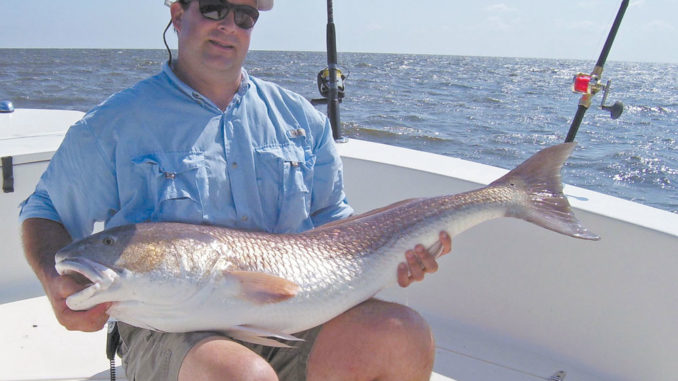
The trophy red drum make a true showing along the coast in late summer and early fall. Because spawning concentrates them in the confined areas of major inlets and river mouths, anglers tend to rub elbows during this spectacular run.
Fortunately, these popular gamefish will frequent familiar places not too far from the inlets. They like artificial reefs and nearshore livebottoms, along with several other popular species. A mixed bag of redfish, flounder and big speckled trout are common in this time frame.
Both the inlets and reefs provide elaborate structure and groceries for a collection of fish. Any accumulation of marine life always has room for a few flounder, trout and huge red drum.
The nearshore hotspots close to the South Carolina-North Carolina state line are made of mostly natural formations but promoted by artificial structures either sunk to the sea floor by accident or prescription. Either way, these are prime places to catch trophy reds and other popular game fish.
Jeff Williamson of Get Busy Fishing Charters spends just as much time at the nearshore reefs as the jetties themselves.
“The jetties will get very crowded, and the reefs allow you to catch a mixed bag with flounder, reds, and trout.” he said.
Based out of Ocean Isle Beach, he is just minutes away from Little River and from reefs between the state line and Cape Fear to the east, including the Jim Caudle Reef just off Little River and the Jolly Mon, Yaupon and McGlammery reefs in North Carolina waters.
All of these popular game fish will be utilizing these reefs, but Williamson has better success within certain areas within the footprint of these reefs.
“Fish right down beside the reefs on the down current side,” said Williamson, who marks the reef structure with his sonar and drops several home-made buoys along these edges. Since he likes to sit just above the reef edge, he anchors on the upcurrent side and deploys enough anchor line until his buoys are beside the boat.
Large mullet between 6 and 8 inches continue to be his baits of choice at these reefs. Anything smaller would be devoured by black sea bass and other pesky bait stealers. But, a large mullet will entice the biggest flounder, trout, and trophy red drum in the area.





Be the first to comment